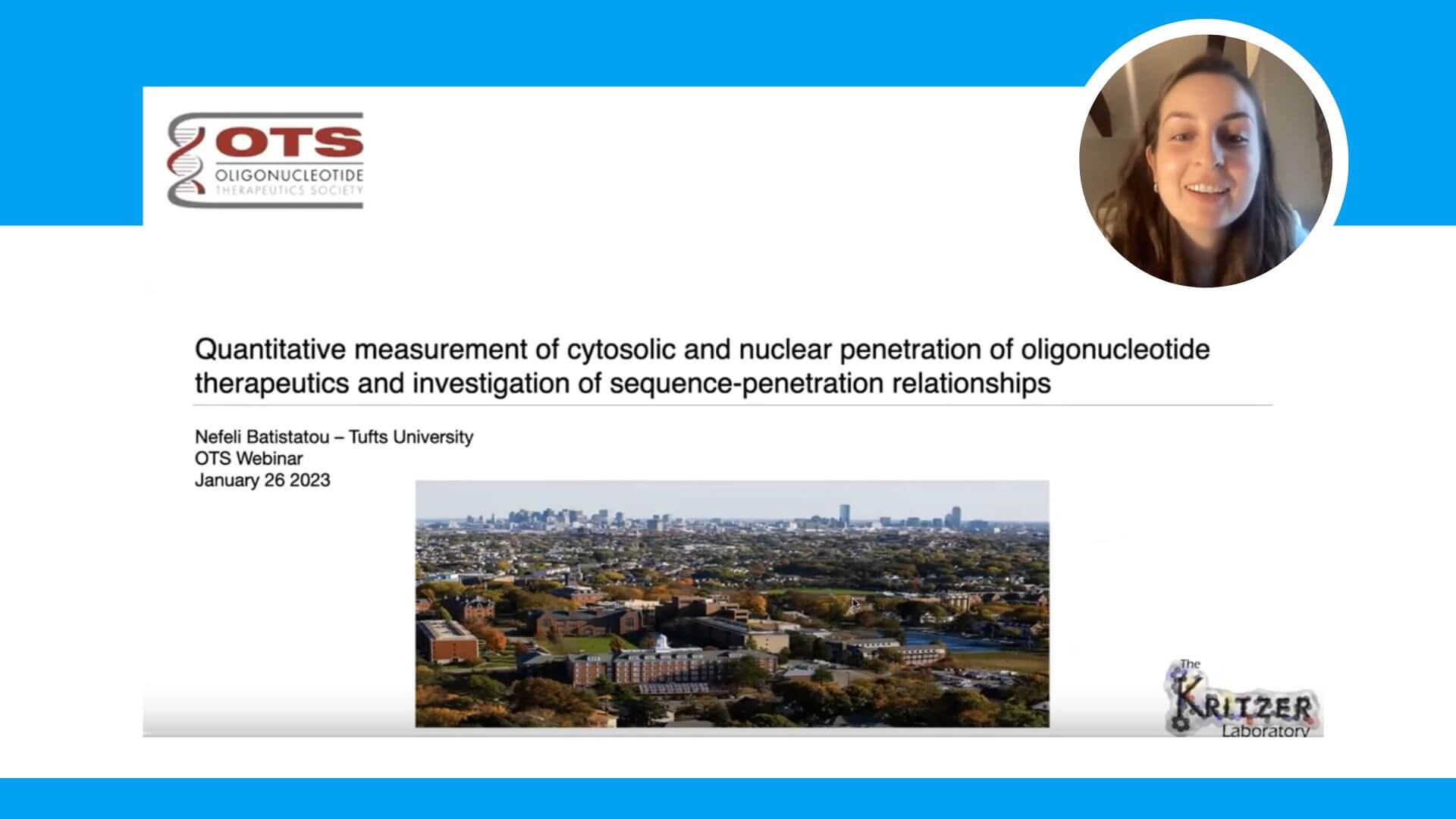
Time: 5pm Amsterdam – 9 AM MST
Date: January 26th, 2023
Topic / Speakers:
Quantitative measurement of cytosolic and nuclear penetration of oligonucleotide therapeutics and investigation of sequence-penetration relationships
Nefeli Batistatou, MSc
Nefeli Batistatou, MSc has developed an assay, the Chloroalkane penetration assay (CAPA) that can exclusively report on material that escapes the endosomes and reaches the cytosol or the nucleus. She and her collegues have benchmarked this assay on RNA therapeutics, and are currently using it to study the sequence-penetration relationships of ASOs as well as their cytosolic penetration in different cells lines.
Patient and variant selection for personalized ASO treatment – can we automate the process?
Marlen Lauffer, PhD
The Dutch Center for RNA Therapeutics (DCRT) is a non-profit consortium made up of three Dutch university medical centers aiming to provide personalized ASOs for patients with very rare diseases of the brain and eye. With the possibility to treat individual patients with mutation-specific ASOs comes the challenge to select which patients and genetic variants are most eligible for these approaches. Prioritization of patients and genetic variants is important to facilitate treating those that benefit most and not treating those unlikely to benefit. We have developed a set of practical guidelines for patient stratification and prioritization of genetic variants. The guidelines take the clinical presentation as well as the variant itself into account and can be used as an aid for clinicians and researchers alike. To accelerate variant evaluation, the Dutch Center for RNA Therapeutics has built a computational tool that automates variant assessment and predicts how likely it is that a variant is suitable for an individualized ASO treatment. We aim to provide a publicly accessible web application for the variant evaluation as well as the possibility to integrate the tool directly into diagnostic pipelines. Especially the latter will aid in identifying suitable patients faster, directly within the diagnostic process. Furthermore, we want to provide users of the tool with the possibility to connect and share knowledge and data for personalized genetic treatments. This will help in aligning compound development, especially once multiple patients within the same gene or disease group are being identified.






